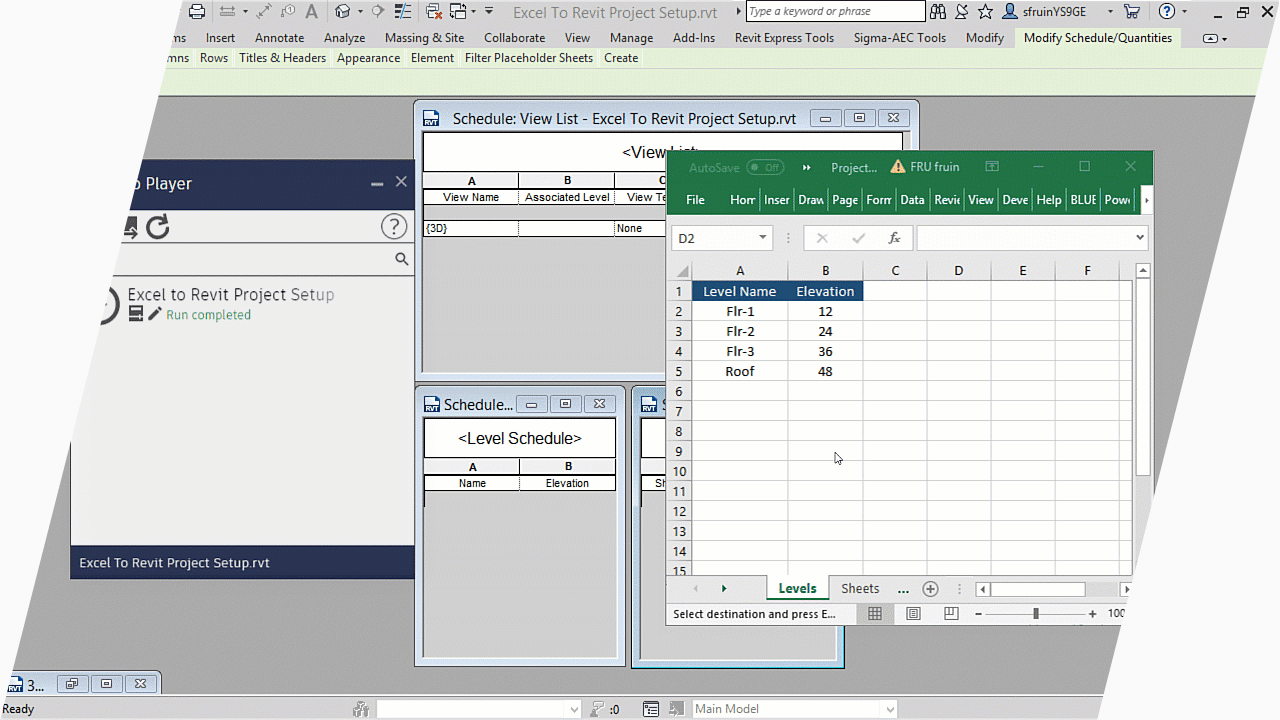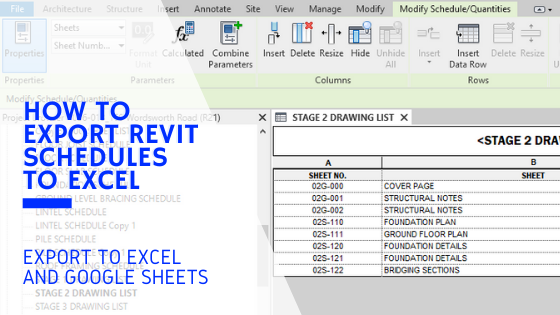Understanding the Art of Data Assimilation: Just How to Seamlessly Import Excel Files Into Revit
In this short article, we will certainly lead you through the process of mastering the art of information combination. Obtain all set to prepare your Excel information easily and follow our step-by-step overview to import files right into Revit. With our ideal techniques, you'll attain data integration success in no time.
Understanding the Importance of Information Combination in Revit
Comprehending the significance of information combination in Revit is vital for smooth importing of Excel data. It enables you to effectively update and take care of details throughout the whole project when you integrate data from Excel right into Revit. This combination makes certain that your style and building and construction process is accurate and up-to-date.
By incorporating information, you can conveniently import and upgrade specifications, routines, and even geometry in Revit. This gets rid of the need for manual data entry, saving you time and lowering the threat of errors. With Revit's information assimilation abilities, you can preserve consistency and accuracy in your job, while also enhancing partnership among staff member.

Discovering the Excel Data Style for Revit Integration

In order to efficiently integrate Excel documents right into Revit, it is crucial to guarantee that the data is formatted correctly. This includes appropriately labeling columns and rows, along with structuring the data in a manner that is suitable with Revit's data schema. Revit utilizes details parameters and categories to organize information, so it is very important to align the Excel data with these specifications to ensure a smooth assimilation.
Furthermore, it is very important to keep in mind that Revit only supports particular data types when importing from Excel. These consist of message, numbers, and dates. Any type of other data kinds, such as solutions or conditional format, will not be identified by Revit and may create concerns during the combination procedure.
Preparing Your Excel Information for Seamless Import Into Revit
To make certain a smooth integration process, you'll need to properly format and label the columns and rows in your Excel data prior to importing it into Revit. Begin by analyzing your Excel data and determining which rows and columns contain appropriate details for your Revit task.
Next, guarantee that the data in each column is properly formatted. For instance, if you have a column for dimensions, make certain that all measurements are constantly formatted in the very same systems of dimension. Revit relies upon consistent format to properly translate and import information.
In addition, it is vital to examine for any type of vacant cells or disparities in your data. Revit may not be his response able to read or import information from cells that are empty or contain errors. It is advised to review your Excel information and clean up any type of disparities before importing it right into Revit.
Step-By-Step Overview to Importing Excel Record Into Revit
As soon as you have actually effectively formatted and identified your Excel information, you can quickly import it right into Revit by following this step-by-step overview. To begin, open Revit and navigate to the "Insert" tab. revit add ins.
Next, a dialog box will show up, allowing you to personalize the import setups. Here, you can pick the worksheet you desire to import, define the variety of cells to import, and select the suitable systems for your information. When you've made your options, click "OK" to continue.
Revit will certainly now display a preview of your Excel information. Take a minute to guarantee and assess the sneak peek that every little thing looks correct. If needed, you can make adjustments to the import settings by clicking the "Setups" button.
Ideal Practices for Information Combination Success in Revit
Ensure you comply with these finest practices to ensure successful integration of information in Revit. First and leading, it is crucial to organize your data in Excel prior to importing it into Revit. This suggests making sure regular calling conventions, proper format, and exact information depiction. Next, take advantage of Revit's integrated tools for data mapping. This will certainly permit you to match the columns in your Excel data with the equivalent specifications in Revit. Bear in mind the information and systems types when informative post mapping the information, as any kind of disparities can cause errors in the integration procedure.
Another crucial technique is to regularly validate and update your data. As your job progresses, it is important to keep your Excel documents as much as date with any kind of modifications made in Revit. This will help preserve the accuracy and consistency of your data across both systems. In addition, use data validation devices within Revit to determine any mistakes or incongruities in the integrated data.
Finally, it is suggested to develop a clear process for information assimilation. This includes defining duties and functions, establishing a communication channel in between employee, and developing a routine tempo for information updates and evaluations. By following these finest practices, you can make sure a effective and seamless integration of information in Revit, inevitably boosting the efficiency and precision of your task.
Conclusion
In conclusion, grasping the art of information integration is crucial for seamless import of Excel files right into Revit. Comprehending the relevance of information integration in Revit is the initial step towards effective assimilation.
When importing data from Excel into Revit, it is crucial to recognize the data layout and how it can affect the integration procedure (revit tools). Revit utilizes details specifications and groups to organize information, so it is essential to align the Excel data with these parameters to make sure a seamless combination
Be conscious of the systems and data kinds when mapping the information, as any type of discrepancies can lead to errors in the combination process.
In addition, make usage of data validation tools within Revit to determine any type of errors or disparities in the incorporated data.
